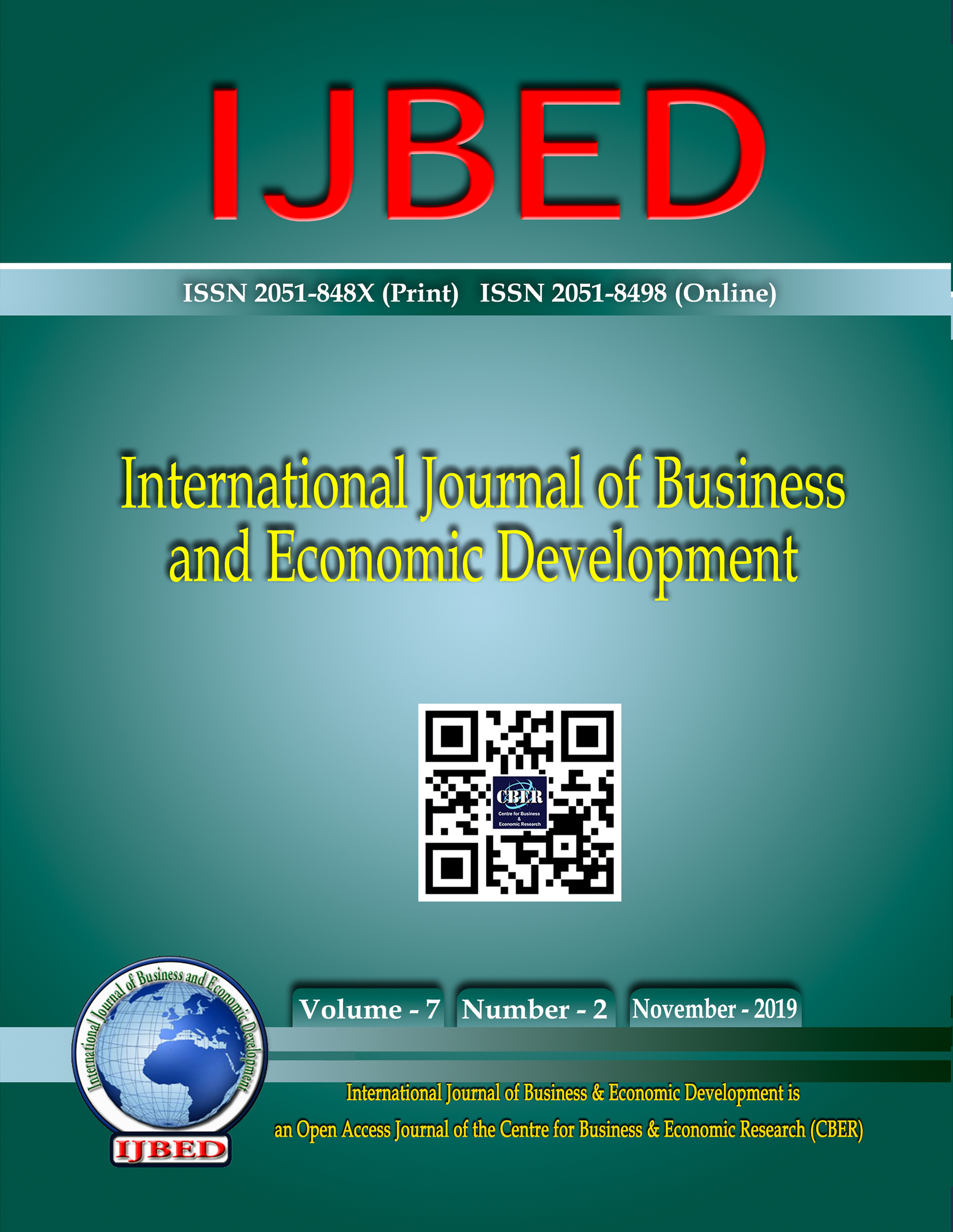Articles
The growth, inequality and poverty triangle in South Africa: A provincial analysis
DOI: https://doi.org/10.24052/IJBED/V013N01/ART-01
-
Purpose of research: Poverty, widening income inequality and economic growth are crucial challenges in sustainable development. A significant fraction of the world's poorest population still struggles to achieve a minimal standard of living throughout emerging nations, particularly in Africa, despite decades of tremendous progress in reducing poverty and improving prosperity. Developing countries tend to have inconsistent progress in eliminating extreme poverty due to reasons specific to geographic and national identity. The study explored the growth, inequality, and poverty triangle. Thus, the objective of the study was to explore the impact of economic growth and income inequality on poverty by looking at the nine South African provinces, over the periods of 1995 to 2022.
Design/methodology: The study adopted the panel data methodologies of the pooled mean group, feasible generalized least squares, and panel-corrected standard error technique.
Results/findings: Empirical results obtained from the study revealed that as the economy positively progresses in the long run there is an increase in the human development index unlike the short run, implying a decline in poverty levels. Income inequality was found to positively affect the human development index in both short- and long-term. This shows that as income inequality intensifies, the poverty levels among the nine provinces in South Africa will continue to increase thus leading to a deterioration in the standard of living.
Practical implications and Conclusions: The outcome of the study suggests that economic growth must be stimulated and inclusive. Effective redistributive policies are required to ameliorate income inequality.
- View article
The role of state competitiveness and perceived insecurity in attracting foreign direct investment in Mexico
DOI: https://doi.org/10.24052/IJBED/V013N01/ART-02
-
State competitiveness is a key factor influencing a country's capacity to attract foreign direct investment (FDI), as it reflects the efficiency of institutions, infrastructure, macroeconomic stability, and innovation capacity, among others. In Mexico, the Mexican Institute for Competitiveness (IMCO) is responsible for measuring and analyzing state competitiveness through its State Competitiveness Index, which evaluates factors such as economic stability, governance, innovation, and security conditions.This study explores how state competitiveness and perceived insecurity impact the attraction of Foreign Direct Investment (FDI) across Mexican states, using a comprehensive model that incorporates key variables such as state competitiveness, perception of insecurity, political party in power, and GDP. Based on data from 2019 to 2023, the analysis reveals that the State Competitiveness Index is the most significant predictor of FDI, exhibiting a positive relationship with new investments. This indicates that higher state competitiveness tends to attract more foreign investments. Additionally, the Perception of Insecurity Index demonstrates a significant, albeit smaller, effect on FDI, suggesting that increased insecurity perception can still influence investment flows, though to a lesser extent. These findings underscore the complex dynamics between security perceptions, competitiveness, and foreign investment, providing valuable insights for policymakers aiming to enhance investment attraction strategies.
- View article
South Africa-Africa trade: Implications for South Africa in intra-Africa trade with the African continental free trade area in place
DOI: https://doi.org/10.24052/IJBED/V013N01/ART-03
-
South Africa’s trade was examined for the period 2001-2021 to give insights into current trade with Africa as this has implications for its trade in the African Continental Free Trade Area (AfCFTA). The structure of goods traded, trade complementarity, ease of market access, trade intensity with regional groups, and its trade integration dimension with Africa were examined. Results show that (i) Africa is an important market for South Africa’s manufactured products with greater skill and technology content and there is ease of market access for these products into African markets; (ii) its trade with Africa is highly complementary; and (iii) it has strong trade linkages with Africa’s regional groups. This is a foundation which South Africa would utilise to consolidate, broaden and strengthen its trade in the AfCFTA because (i) more complementary trade opportunities would emerge which could be harnessed in addition to current opportunities; (ii) African markets would open up more as trade barriers are reduced further, allowing products more access; (iii) current trade linkages with regional groups would strengthen as trade barriers are reduced, thus broadening the scope of South Africa’s trade in Africa; and (iv) regional value chains and production clusters initiatives would arise as market access improves and new and dynamic areas of comparative advantages emerge. The AfCFTA offers opportunities for countries to tap into under-exploited export markets in other countries and to import cheaper inputs. However, there are challenges in accessing and utilising such opportunities due to (i) non-tariff barriers like transport infrastructure; unharmonised trade facilitation, documentation, and procedures; and limitations in institutional capacities to implement trade facilitation measures..
- View article
Previous Issue
- Volume 13 Issue 01
- Volume 12 Issue 02
- Volume 12 Issue 01
- Volume 11 Issue 02
- Volume 11 Issue 01
- Volume 10 Issue 02
- Volume 10 Issue 01
- Volume 09 Issue 02
- Volume 09 Issue 01
- Volume 08 Issue 02
- Volume 07 Issue 02
- Volume 07 Issue 01
- Volume 06 Issue 3
- Volume 06 Issue 2
- Volume 06 Issue 1
- Volume 05 Issue 3
- Volume 05 Issue 2
- Volume 05 Issue 1
- Volume 04 Issue 3
- Volume 04 Issue 2
- Volume 04 Issue 1
- Volume 03 Issue 3
- Volume 03 Issue 2
- Volume 03 Issue 1
- Volume 02 Issue 3
- Volume 02 Issue 2
- Volume 02 Issue 1
- Volume 01 Issue 3
- Volume 01 Issue 2
- Volume 01 Issue 1



